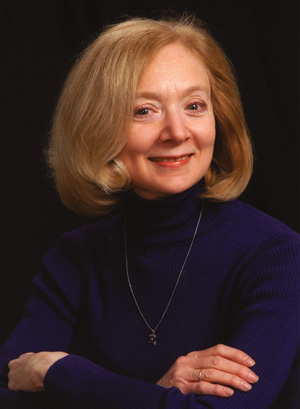From restricted breathing to breath of fresh air — a Jewish transformation
Published September 1, 2010
A non-Jewish friend recently attended her first bar mitzvah and told me how impressed she was with the young man’s performance. She wondered if there was a similar ceremony for girls and if I had celebrated one at that age.
Yes to both, I said.
ADVERTISEMENT
“Was it hard to do all that reading in Hebrew?” she asked. “Were you nervous?”
“Yes” would have probably been the correct answer to those questions too, but I had to be honest. There was really only one thing I remembered.
My mother made me wear a girdle.
I wish I could have reported a more profound experience. But the only sensation that sticks in my mind is feeling unbearably uncomfortable as I stood before the congregation, my adolescent body secretly squished by the elastic hidden beneath the skirt of my royal blue suit. That wretched garment was so tight that I didn’t feel like I could walk or even breathe like a normal person. It just didn’t seem right.
But, hey, it was the South and it was the 1960s. My bat mitzvah was the 16th to be held at Beth Sholom, the first Conservative synagogue in Memphis. Not only were my parents among the founders of the congregation, my father was the first president. I had an image to uphold.
Women didn’t wear slacks to shul, and in my mother’s rule book, they also didn’t jiggle.
There was also something else we didn’t do. We didn’t get called up to the Torah.
So, yes, I had a bat mitzvah. But it was on a Friday night. And although I read the Haftarah, I did not chant from the Torah.
It was quite a bit different from my older brother’s bar mitzvah but I don’t remember resenting that at the time. After all, I could never sing on key so I was probably relieved to have that embarrassment minimized. And when it comes to food, I’m sure I would have preferred a dessert table laden with anything chocolate to a Saturday luncheon featuring chopped liver molded in the shape of the Ten Commandments tablets.
ADVERTISEMENT
But somewhere along the way, things changed. My feelings about Judaism began to mimic my feelings about that girdle. I felt restricted, uncomfortable, unnatural. As I grew older and moved away from Memphis, had a career and supported myself, I began to feel detached, excluded from my religion.
I worked as hard as a man, had the same responsibilities as a man, yet when I walked into a synagogue, I was reduced to something less. There was no place for me, at least not the kind of place I wanted to be. I didn’t count and began to drift away.
Meanwhile, the Conservative movement was evolving. I was living in New York City and some friends invited me to their Aufruf at a Conservative synagogue where they were to be married the next day. Little did I know that they had asked that I be given an aliyah. It was the first time I’d ever been called up to the Torah. Although I’d been hearing those blessings my whole life and I could read Hebrew, I began to panic and desperately looked for a way to sneak out.
It was too late. There was no escape. But that turned out to be a good thing because something inside of me changed that morning. Yes, I was totally nervous. I had to chant those blessings in my screechy voice in front a large number of strangers. I had never stood before an open Torah and I didn’t really know what to do. But here’s what happened. For the first time in my life, I felt like I belonged. I wanted to come back.
Although my father had passed away, my mother encouraged me and sent me a tallit she purchased from Beth Sholom’s gift shop.
Years later, after both she and I moved to St. Louis, we would attend Brith Sholom Kneseth Israel and I could see her beaming with pride when I was honored with an aliyah. She, too, has now passed but I carry that vision with me when I go up to the Torah. Wrapped in my Memphis tallit, I hear Jonathan Belsky, the Ba’al Koreh, call my Hebrew name, the daughter of Nehemia and Malka, I touch the open Torah with my tallit and bring it to my lips. My parents are with me and I am at peace.
By the way, I still wear skirts to shul. But as for those feelings of discomfort, well, they got ditched years ago just like that wretched girdle.
Gail Appleson is a writer for Armstrong Teasdale LLP and freelancer who lives in St. Louis.
“Dor to Dor,” is an intermittent Jewish Light series looking at various aspects of “grown-up” life and generational connections through the lens of Jewish writers living in the St. Louis area.
If you are interested in contributing to Dor to Dor, please email [email protected].















